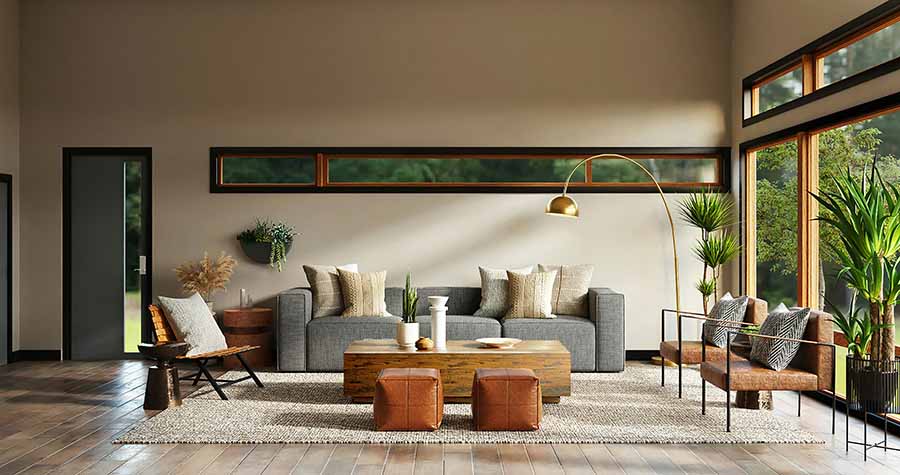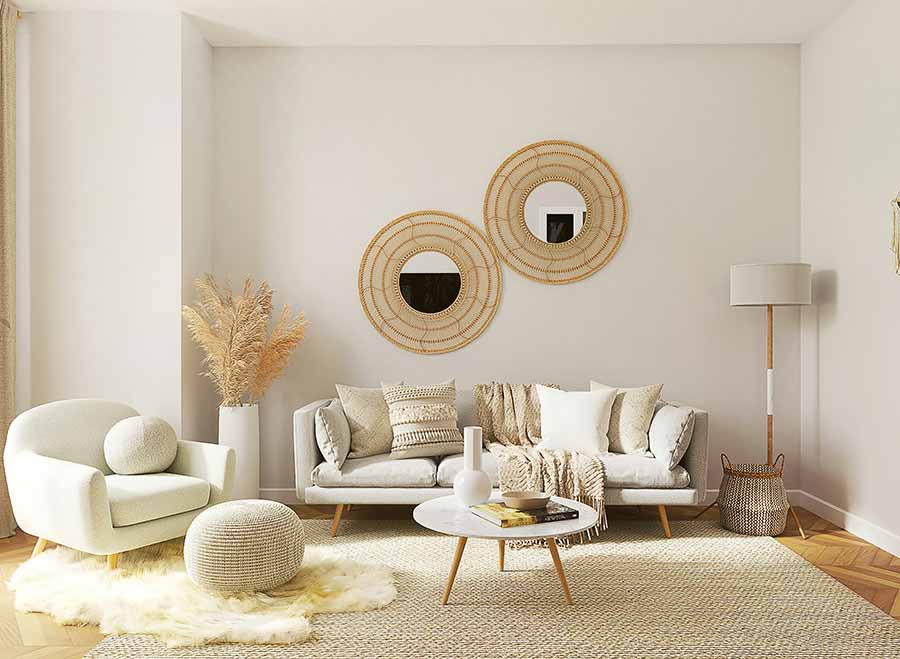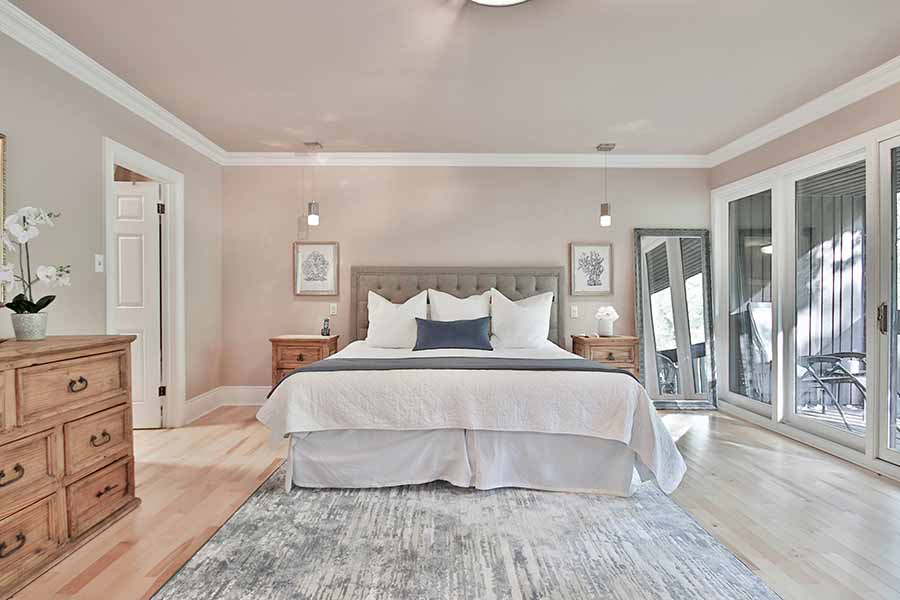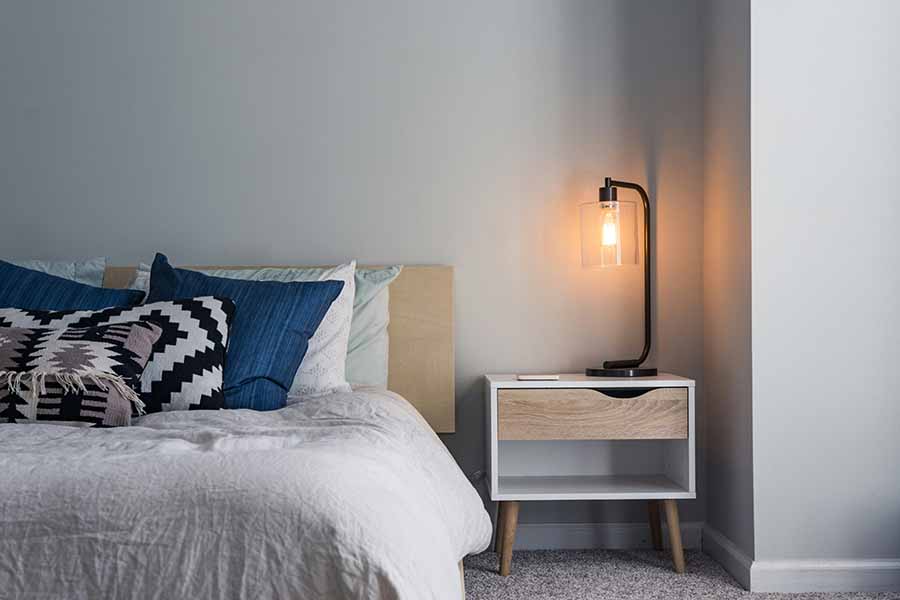How to Layer Textures in Interior Design Without Overdoing It
One of the most potent yet understated components of interior design is texture. It gives a room character, warmth, and depth. However, too much texture—or the incorrect combination—can overpower a space and cause visual confusion, much like seasoning in a fine dining dinner. Intentionality and balance are crucial.
This lesson will explain how to become an expert at mixing textures to create a cohesive, fashionable space without going overboard.
1. Begin with a neutral foundation
A neutral base allows textural pieces to stand out and serves as an anchor for the room. A soothing background is produced by walls, big furniture, and carpeting in subdued colors, such as white, beige, gray, or gentle earth tones. It is simpler to incorporate textures into this neutral base without the space feeling overly “busy.”
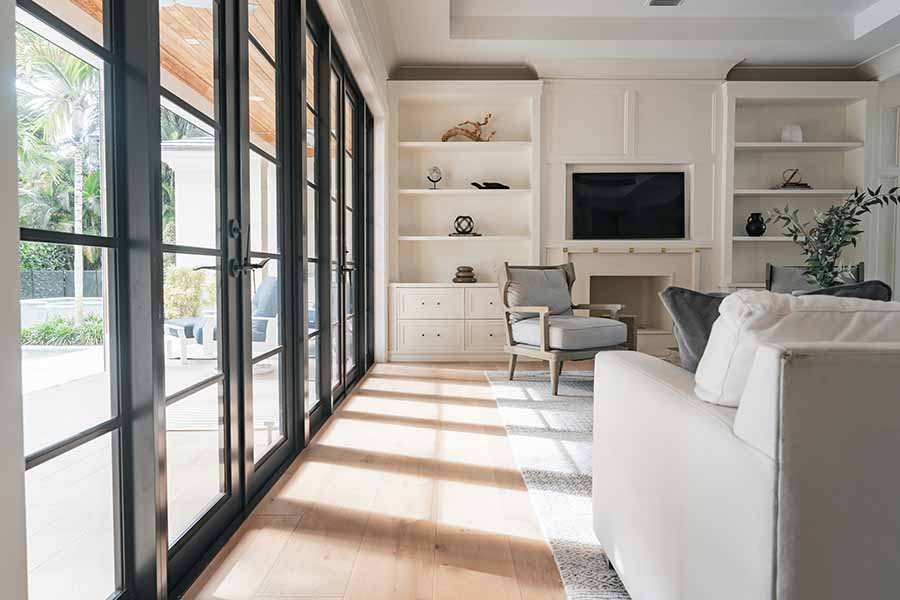
Expert advice: For more depth, apply eggshell or matte paint finishes instead of glossy ones.
2. Combine Various Materials, Not Just Designs
Texture is about how something feels, not just how it looks. Try mixing several materials, like
- Wood to keep warm
- Metal for a modern, businesslike look
- Glass for a seamless contrast
- For suppleness, use cotton or linen.
- For richness, use leather.
- For luxurious comfort, use velvet, wool, or imitation fur.
Instant visual interest may be produced by placing a bulky wool throw over a linen sofa or by combining a sleek glass coffee table with a jute rug.
3. Create Balance with Contrast
When there is contrast, texture works best. Combine hard and soft, glossy and matte, smooth and rough. Tension is created—and in a good way—by a worn wooden table beneath a contemporary metal light fixture.
The room may feel flat if all of the surfaces have the same texture. It may seem disorganized if everything is textured. Contrast, not competition, is the aim.
4. Arrange Accessories in Layers
Small touches of texture can be added with pillows, throws, wall art, curtains, carpets, and lampshades. Try combining:
- Smooth leather chairs with knitted cushions
- Against pristine cotton linen, velvet pillows
- Baskets made of woven materials by a stone stove
Without a complete makeover, accessories allow you to experiment and switch up materials according to the season or as your style changes.
5. Adopt a Vertical Perspective
Remember your ceiling and walls. There are numerous ways to add texture to vertical surfaces, including:
- Wall panels or wallpaper with texture
- Shiplap or wood beams for the ceiling
- Canvas, metal, or macramé wall hangings
Choose one or two textural focal areas and give the rest room to breathe; just be careful not to overdo it.
6. Keep Your Color Scheme Limited
Overdoing color is also one of the simplest ways to overdo texture. Your textures may take center stage with a small, well-balanced color scheme. Similar-toned textures offer depth instead than becoming distracting.
When suede, knits, and natural woods are used, for instance, a monochromatic palette of warm taupes and creams can nevertheless appear layered and rich.
7. Make ruthless edits
After adding your textured parts, take a step back and evaluate. Consider this:
- Is everything happening too much?
- Are there any things vying for attention?
- Is there anything that may be taken out to create a more tranquil atmosphere?
Editing is a step in the artistic process of layering. Less really is more in certain situations.
The goal of layering textures is to add depth and engage your senses. When done well, it gives a room a cozy, lived-in, and well-thought-out vibe. The secret is to play with contrast while keeping a cohesive appearance by striking a balance between diversity and coherence.
So feel free to combine that velvet chair with a table made of rustic wood. Your room will appreciate it if you just remember to maintain equilibrium.

